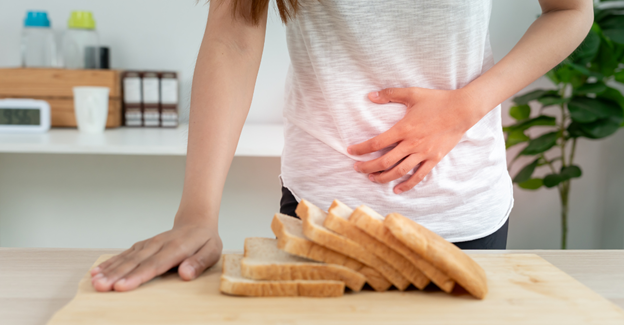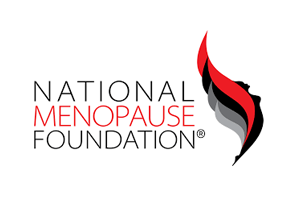What You Need to Know
Have you ever wondered if persistent fatigue, brain fog, or unexplained gut issues could be tied to something hidden in your microbiome? Candida, a type of yeast normally found in our bodies, might be lurking around your gut microbiome…and contributing to chronic fatigue! Let’s dive into the connection.
What Is Candida Overgrowth?
Candida albicans lives naturally in the mouth, gut, and genital tract. In a healthy system, friendly bacteria keep Candida in check. But when that balance is disrupted, due to antibiotics, a high-sugar diet, chronic stress, or poor gut health, Candida can proliferate, leading to overgrowth. Symptoms may include bloating, digestive upset, brain fog, fatigue, skin rashes, and more.
How Candida May Link to CFS/ME
Chronic Fatigue Syndrome (CFS), also known as Myalgic Encephalomyelitis (ME), is a complex and often debilitating condition characterized by deep, unrelenting fatigue, brain fog, muscle or joint pain, and a range of symptoms that persist for six months or more without a clear medical cause. Although the exact origins of CFS remain unclear, emerging research points to chronic infections, immune dysregulation, and gut health imbalances as possible contributors, Candida overgrowth among them.
Some studies have found elevated levels of Candida-related antibodies in individuals with CFS when compared to healthy controls. This suggests that the immune system may be reacting to a persistent Candida presence, indicating either an unresolved infection or heightened immune sensitivity. This immune activation can create a low-grade inflammatory state that contributes to fatigue and other systemic symptoms.
Chronic Candida overgrowth in the gastrointestinal tract may also contribute to increased intestinal permeability, often referred to as "leaky gut." In this state, compounds like endotoxins and fungal byproducts can escape into the bloodstream, triggering systemic inflammation and immune reactivity. This inflammation has been associated with cognitive challenges such as brain fog, mental fatigue, and mood instability, which are hallmark symptoms of CFS.
Why Candida Might Trigger CFS Symptoms
There are several proposed mechanisms by which Candida overgrowth could contribute to the symptoms seen in Chronic Fatigue Syndrome:
●
Immune Activation: Persistent Candida presence can overstimulate the immune system, leading to a chronic inflammatory state. This type of immune burden may manifest as fatigue, brain fog, and physical malaise.
●
Increased Gut Permeability: Candida can produce metabolites that damage the intestinal lining, allowing toxins and undigested food particles to enter the bloodstream. This process, known as leaky gut, can fuel systemic inflammation and worsen fatigue and cognitive symptoms.
●
Neurotransmitter Disruption: The health of your gut has a direct impact on the production of neurotransmitters like serotonin and dopamine. Candida-induced dysbiosis can disrupt this process, potentially contributing to low energy, poor concentration, and mood imbalances.
●
Multiple Pathogen Load: Candida overgrowth may not be acting alone. It could be one of several microbial imbalances—including viruses, bacteria, and parasites—that collectively overwhelm the immune system and disrupt energy metabolism, creating a complex fatigue picture.
Strategies to Address Candida and Fatigue
If Candida overgrowth is suspected, especially in someone experiencing fatigue alongside digestive issues, recurring yeast infections, or brain fog, a thoughtful, integrative approach may help.
●
Dietary Adjustments: Reducing sugars, refined carbohydrates, and processed foods deprives Candida of its primary fuel source. Emphasize whole foods, fiber-rich vegetables, healthy fats, and proteins. Foods like garlic, coconut oil, and cruciferous vegetables offer gentle antifungal support.
●
Probiotics and Prebiotics: Reintroducing beneficial bacteria through high-quality probiotics can help crowd out yeast and rebalance the gut microbiome. Prebiotic fibers support this process by feeding the healthy bacteria that suppress Candida.
●
Targeted Antifungal Herbs and Nutrients: Botanicals like oregano oil, pau d’arco, caprylic acid, and garlic have been used to control yeast overgrowth. These should be introduced gradually, as rapid yeast die-off can temporarily intensify symptoms (a reaction known as Herxheimer or "die-off").
●
Gut Healing Nutrients: Supplements such as L-glutamine, zinc carnosine, and deglycyrrhizinated licorice (DGL) may help repair the intestinal lining and reduce inflammation, supporting long-term digestive resilience.
●
Lifestyle Habits: Stress reduction, consistent sleep, and gentle movement like walking or yoga help regulate the nervous system and improve immune function. These foundational habits are essential when addressing both Candida and chronic fatigue.
If you’re struggling with low energy, brain fog, digestive issues, or recurring yeast infections, exploring a Candida-centered protocol under supervision can be a meaningful step. Carefully implementing dietary changes, gut support, and antifungal strategies is the first step. Be sure to work with a healthcare provider to test, track, and tailor protocols safely and effectively - we/I can help!
References
- Evengård, B., Gräns, H., Wahlund, E., & Nord, C. E. (2007). Increased number of Candida albicans in the faecal microflora of chronic fatigue syndrome patients during the acute phase of illness. Scandinavian Journal of Gastroenterology, 42(12), 1514–1515. https://doi.org/10.1080/00365520701580397pmc.ncbi.nlm.nih.gov+1pmc.ncbi.nlm.nih.gov+1
- Maes M, Mihaylova I, Leunis JC. Increased serum IgA and IgM against LPS of enterobacteria in chronic fatigue syndrome (CFS): indication for the involvement of gram-negative enterobacteria in the etiology of CFS and for the presence of an increased gut-intestinal permeability. J Affect Disord. 2007 Apr;99(1-3):237-40. doi: 10.1016/j.jad.2006.08.021. Epub 2006 Sep 27. PMID: 17007934.
- Campagnolo, N., Johnston, S., Collatz, A., Staines, D., & Marshall-Gradisnik, S. (2017). Dietary and nutrition interventions for the therapeutic treatment of chronic fatigue syndrome/myalgic encephalomyelitis: a systematic review. Journal of Human Nutrition and Dietetics, 30(3), 247–259. https://doi.org/10.1111/jhn.12435pubmed.ncbi.nlm.nih.gov
- Lorusso, L., Mikhaylova, S. V., Capelli, E., Ferrari, D., Ngonga, G. K., & Ricevuti, G. (2009). Immunological aspects of chronic fatigue syndrome. Autoimmunity Reviews, 8(4), 287–291. https://doi.org/10.1016/j.autrev.2008.08.003
- Hobday, R. A., &
Cason, J. W. (2008). Dietary intervention in chronic fatigue syndrome. Journal of Human Nutrition and Dietetics, 21(2), 142–149. https://doi.org/10.1111/j.1365-277X.2008.00857.xpubmed.ncbi.nlm.nih.gov
- Jach ME, Serefko A, Szopa A, Sajnaga E, Golczyk H, Santos LS, Borowicz-Reutt K, Sieniawska E. The Role of Probiotics and Their Metabolites in the Treatment of Depression. Molecules. 2023 Apr 4;28(7):3213. doi: 10.3390/molecules28073213. PMID: 37049975; PMCID: PMC10096791.











